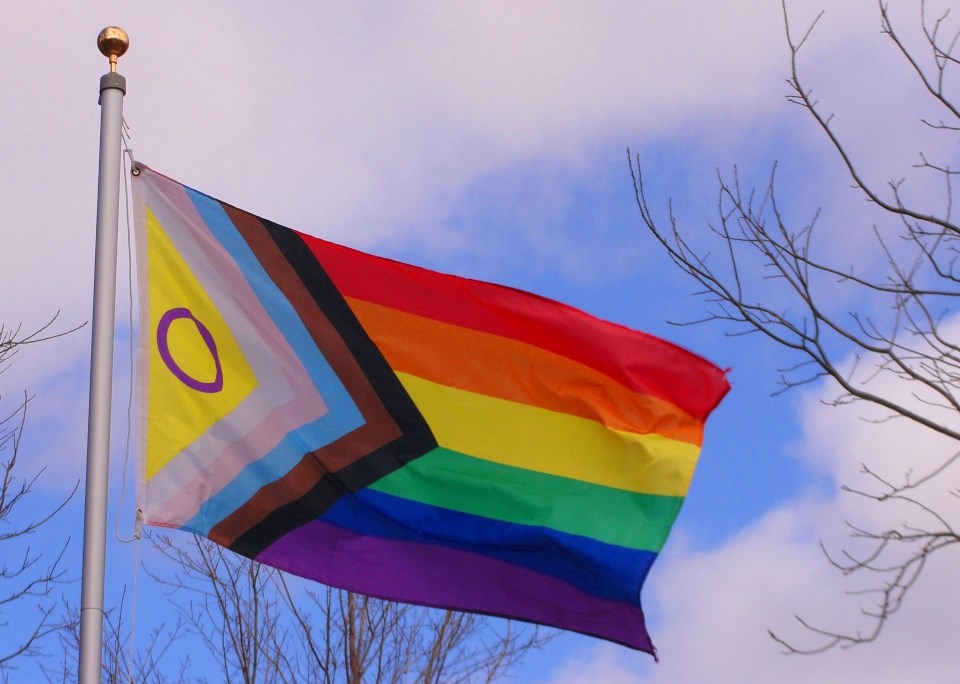ESTEVAN — Members and allies of the Estevan area's Pride community came together for a number of activities earlier this month.
A community gathering was supposed to be held in front of the Estevan Court House on June 22, but precipitation forced the event to be moved indoors to St. Giles Anglican Church. Drew Kaip, a non-binary person who grew up in Estevan, spoke about their experiences growing up in Estevan and provided some background on the Progress Pride flag, which flew in front of city hall. Other people in attendance had the chance to speak and then they played games.
The city's water tower was also lit up in Pride colours during the month.
Kaip said they realized they were non-binary at the age of 18 and came out a few years ago. As for the history of the Progress Pride flag, it was introduced in 2018 by Daniel Quasar.
"The reason that we use the Progress Pride flag is to make sure that we're not only including lesbian, gay and bisexual people, but also trans people," Kaip said. "Unfortunately, within the queer community, we're not all unified in accepting one another, and we make the distinction that trans people are accepted and are with us."
Black and brown stripes are to include people of colour to show respect for other minorities within the community that have different experiences and deserve respect, acknowledgement and a voice, Kaip said, adding the black stripe is also a nod to those who died from HIV and AIDS.
Stryx Dubowski said living in Estevan has been a "double-edge sword". Dubowski like the tight-knit feel of the city, but it's also very isolating.
"The population is smaller, and therefore you have a smaller likelihood of encountering other minorities within it, especially when those minorities know that in the larger populated areas … the likelihood of them finding their community is much higher," Dubowski said.
In smaller communities, Dubowski said it feels like there is one way to live.
"When you are around other people from other cultures that aren't quite buying into the Western settler, colonialist mindset, you start understanding there are other ways to understand the human experience," said Dubowski. "Other ways to label it. Other ways to experience it."
A lot of Dubowski's classmates came out after leaving Estevan or are still in the closet.
When Dubowski and Lilac Colibaba, who was also part of organizing the activities, said they wanted to create a group, it became Estevan's LGBTQ and Allies Social Gathering. It has been going for almost a year and Dubowski said it has a lot of regulars and others who are there occasionally.
"The most marginalized in our community would feel like they have a space," said Dubowski.
Kaip and Dubowski said a lot of people have made friends they hang out with outside the group. Dubowski added that because it provides an open and vulnerable space, people can be transparent, and talk to and get to know each other.
He hopes people who attend the group feel comfortable while they're in Estevan and might even have another reason to stay in the city.
"There are a lot of struggles that our community faces, but we are stronger when we face them together, and the amount of joy that is created from spaces like ours, where we are allowed to be genuine or authentic, is completely or entirely overwhelming the sense of fear or dread that we have from not knowing if people hate us or not."
Other activities held in Estevan during the month. It started June 19 with screen printing at the Estevan Art Gallery and Museum. Pride rocks were painted at the Estevan Public Library the following day, and button making happened at the Estevan Public Youth Centre on June 21.






